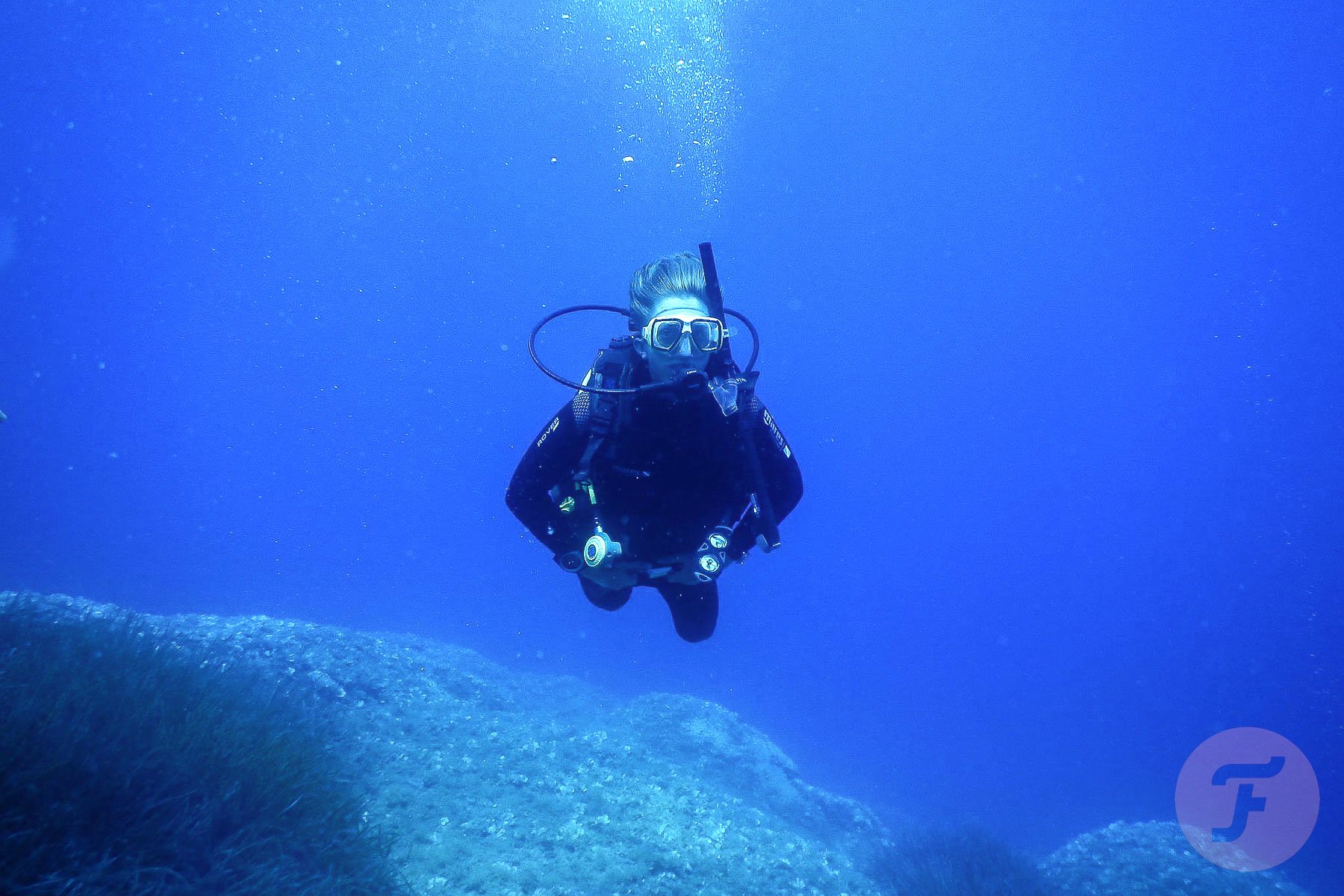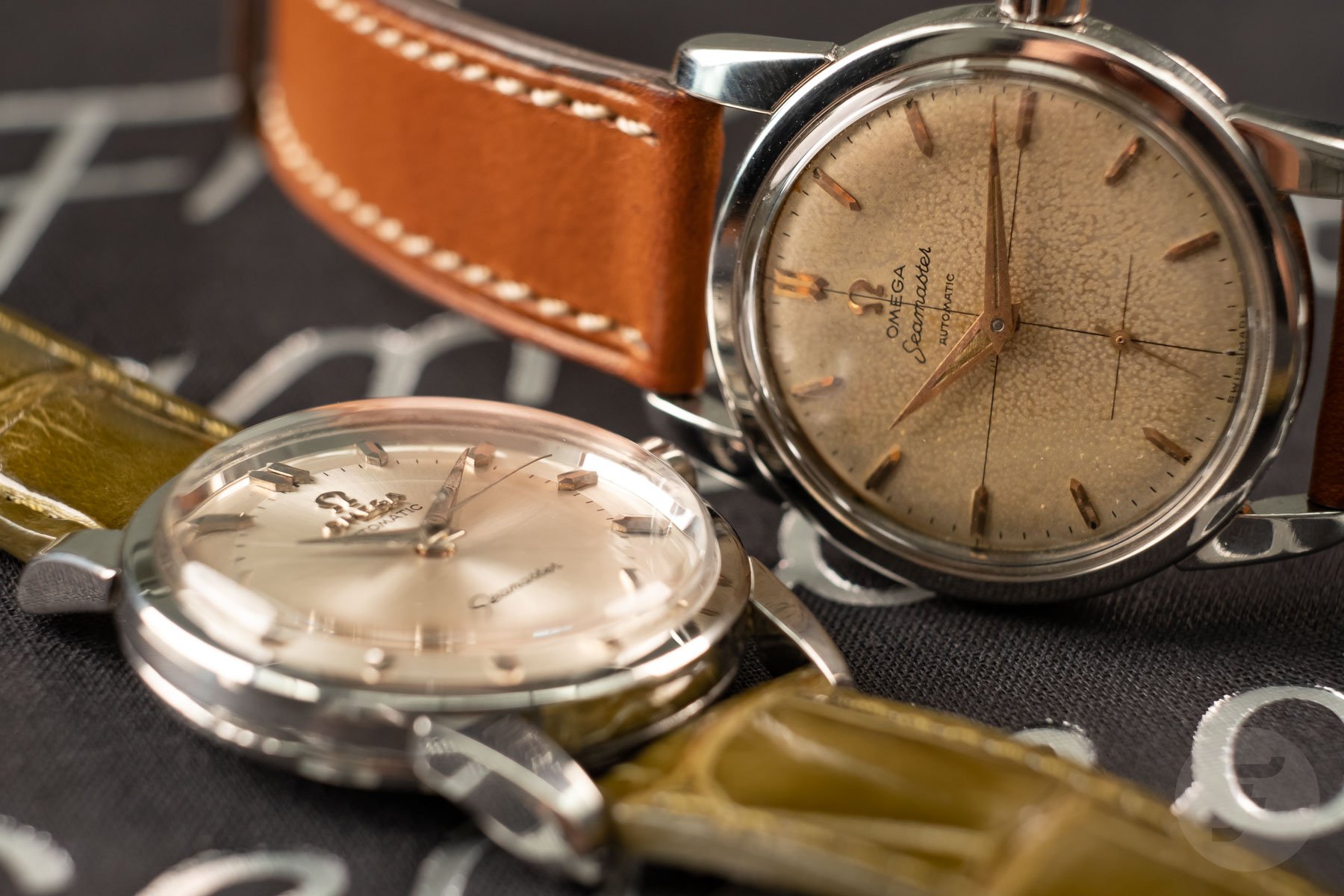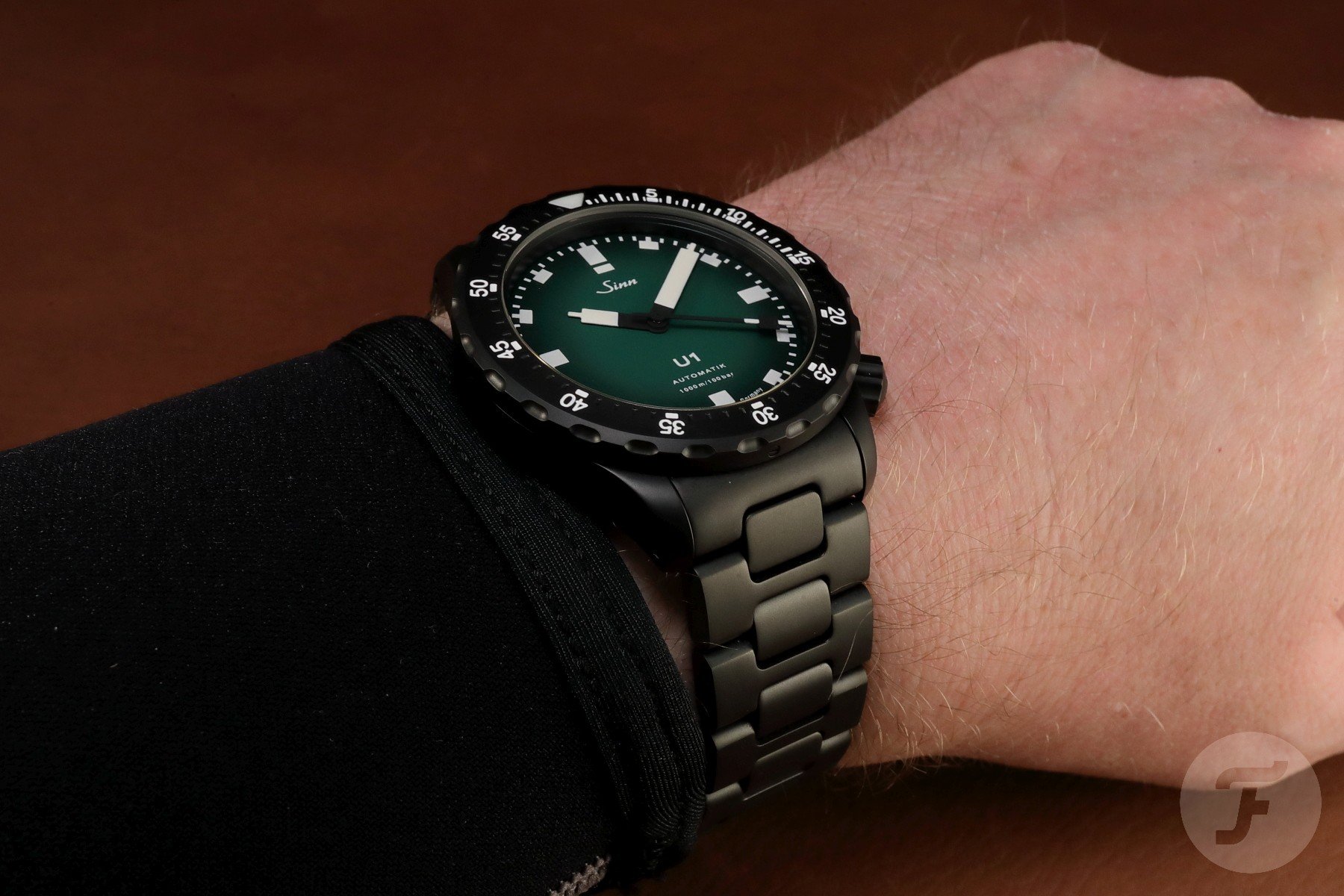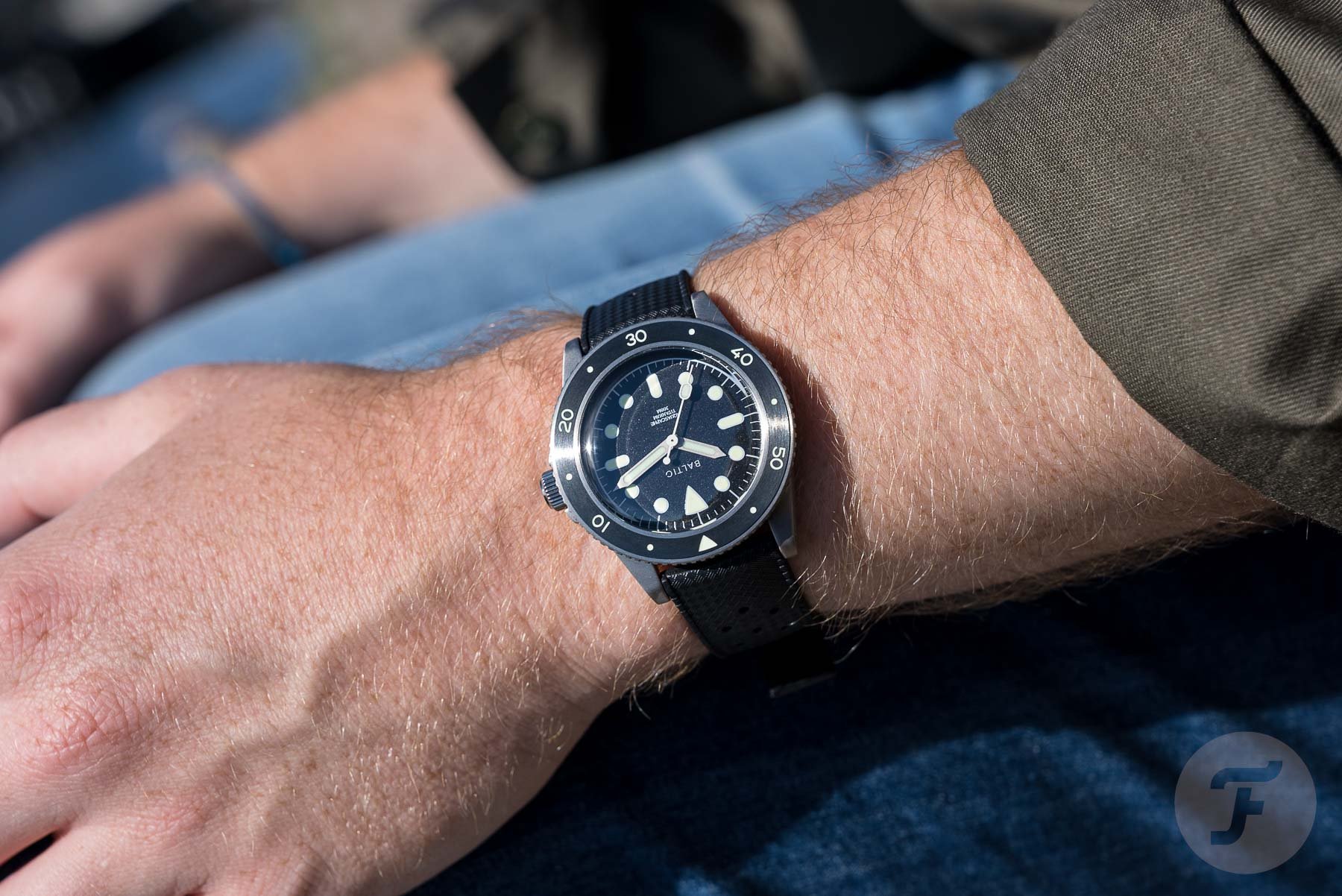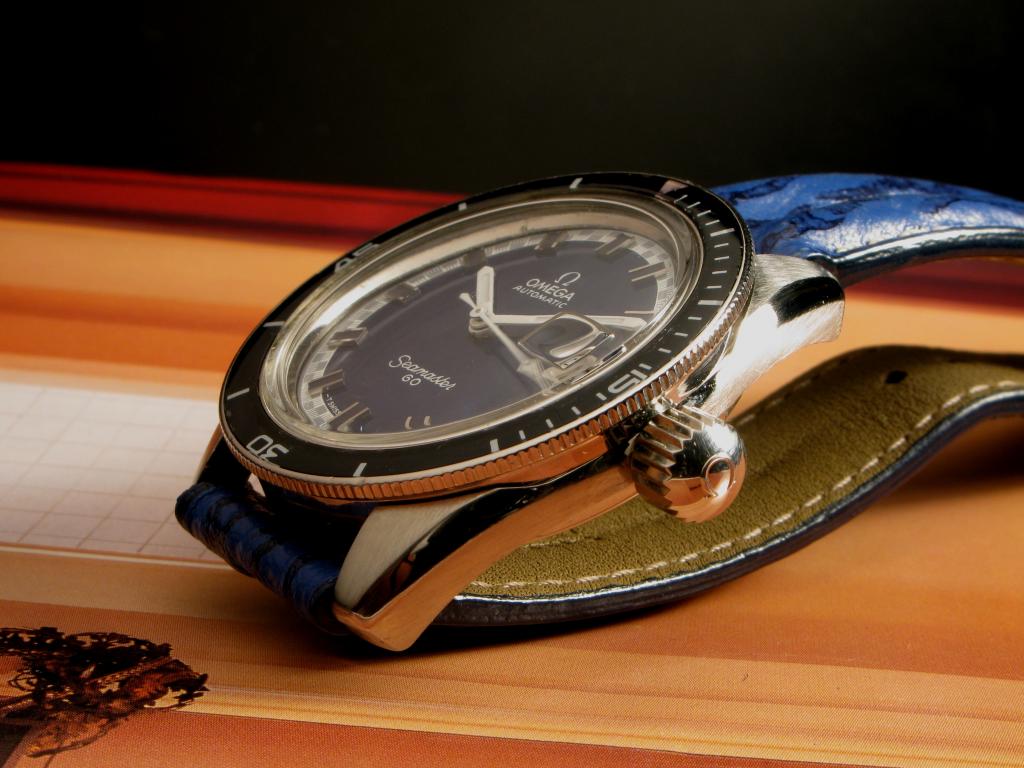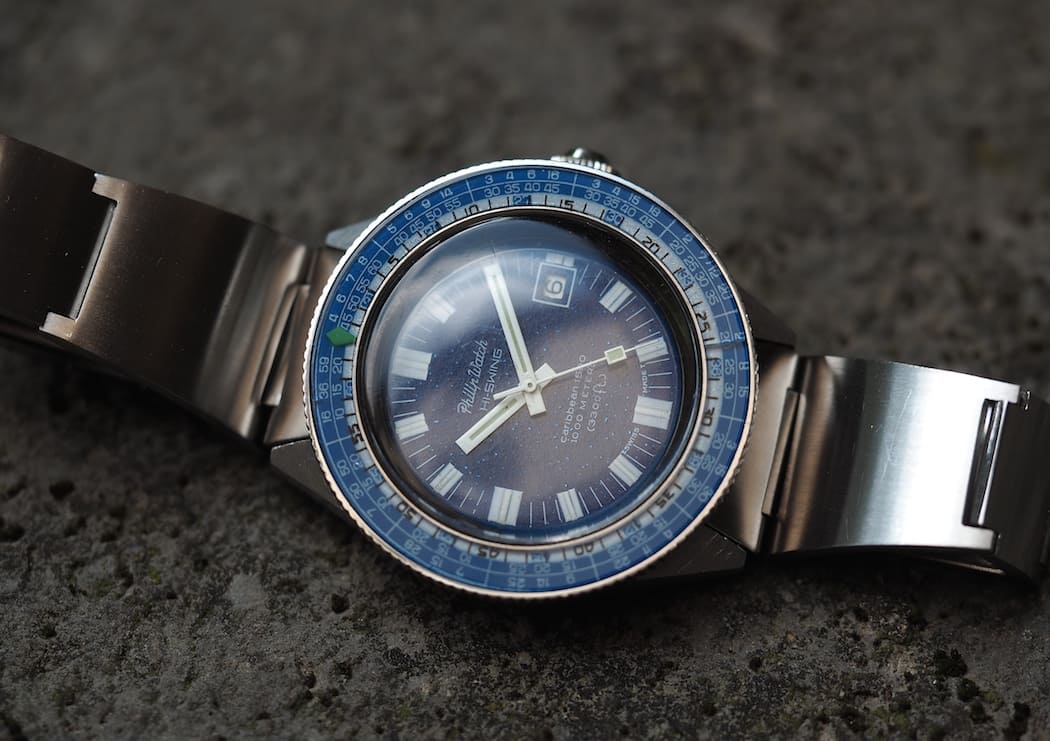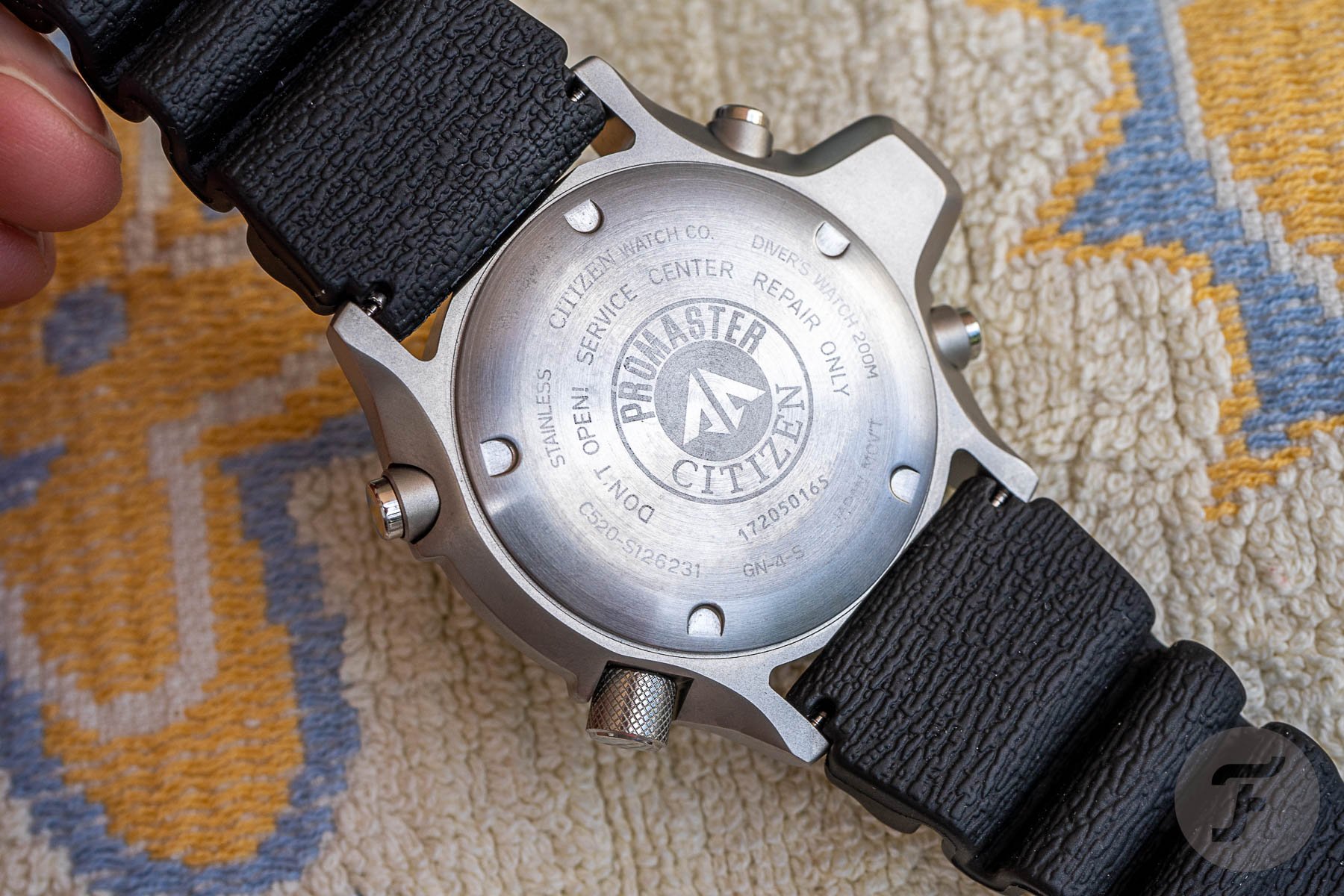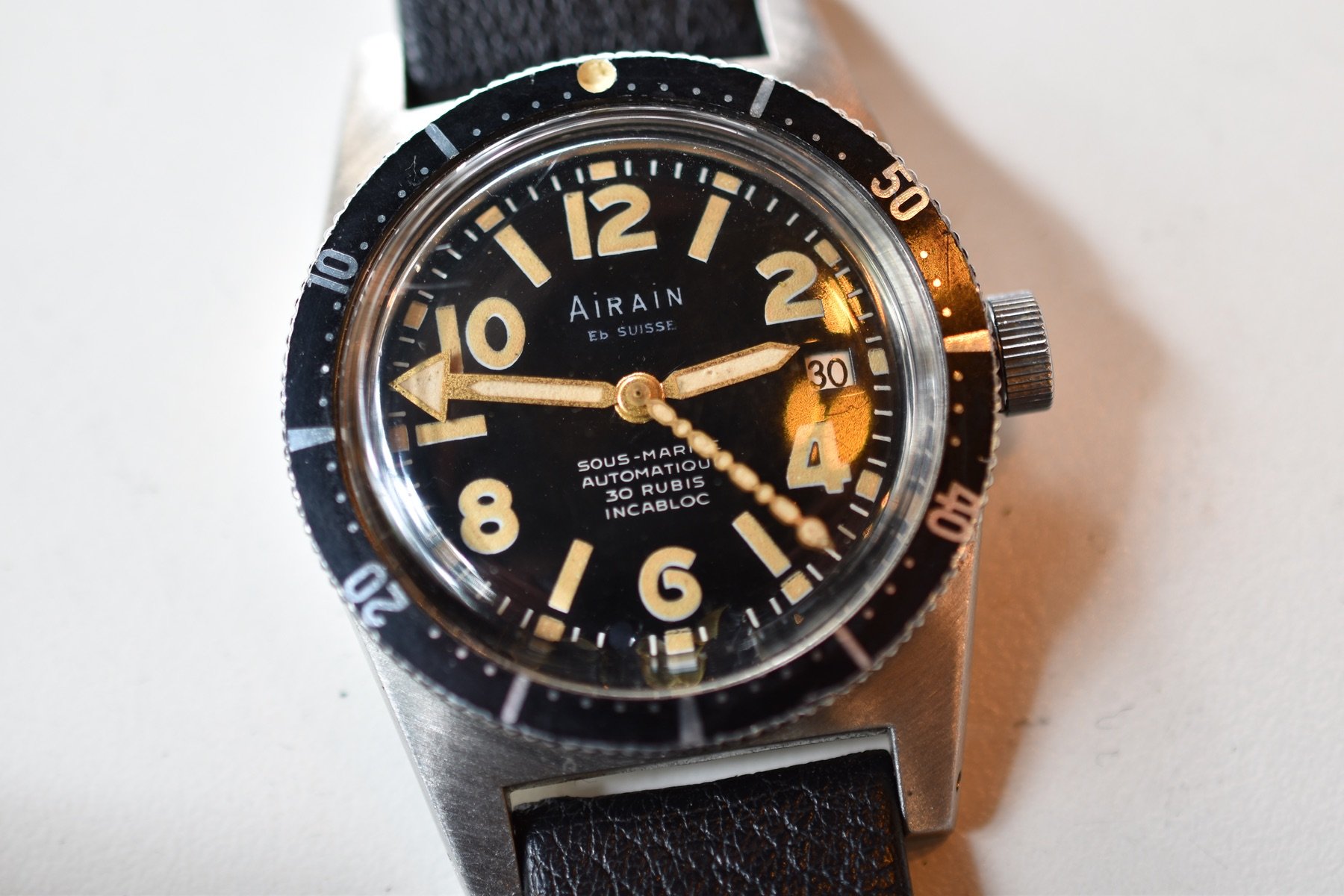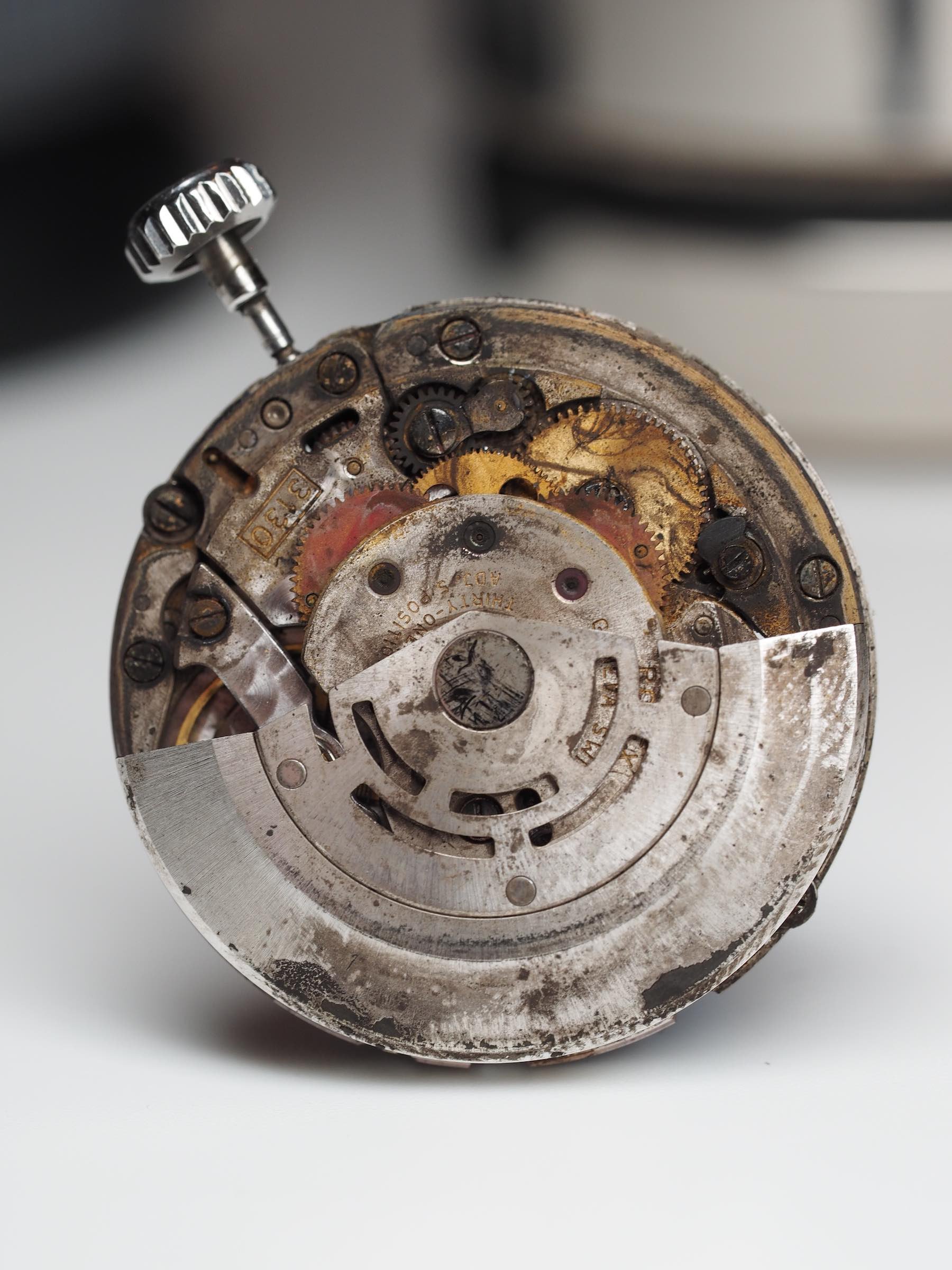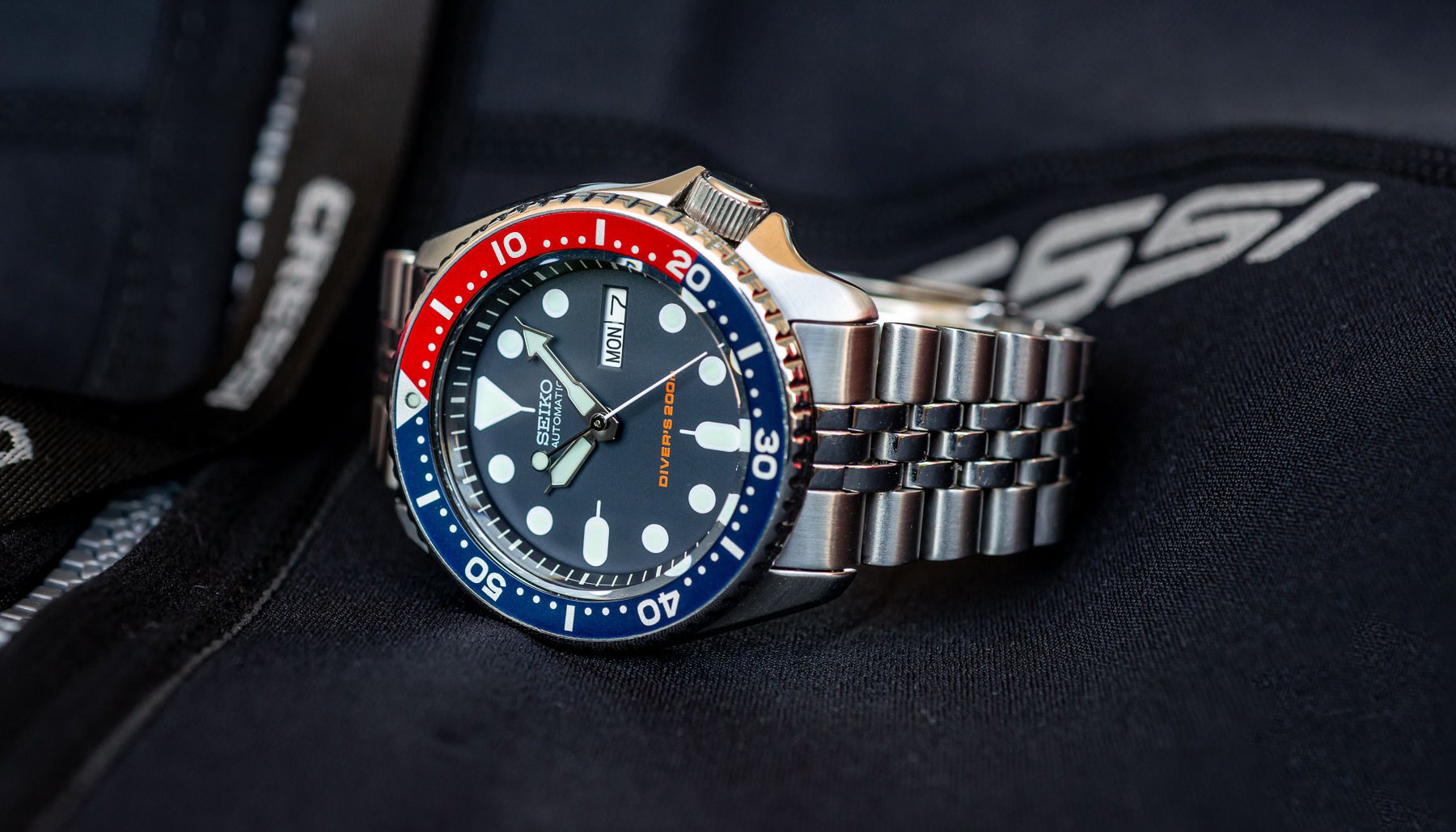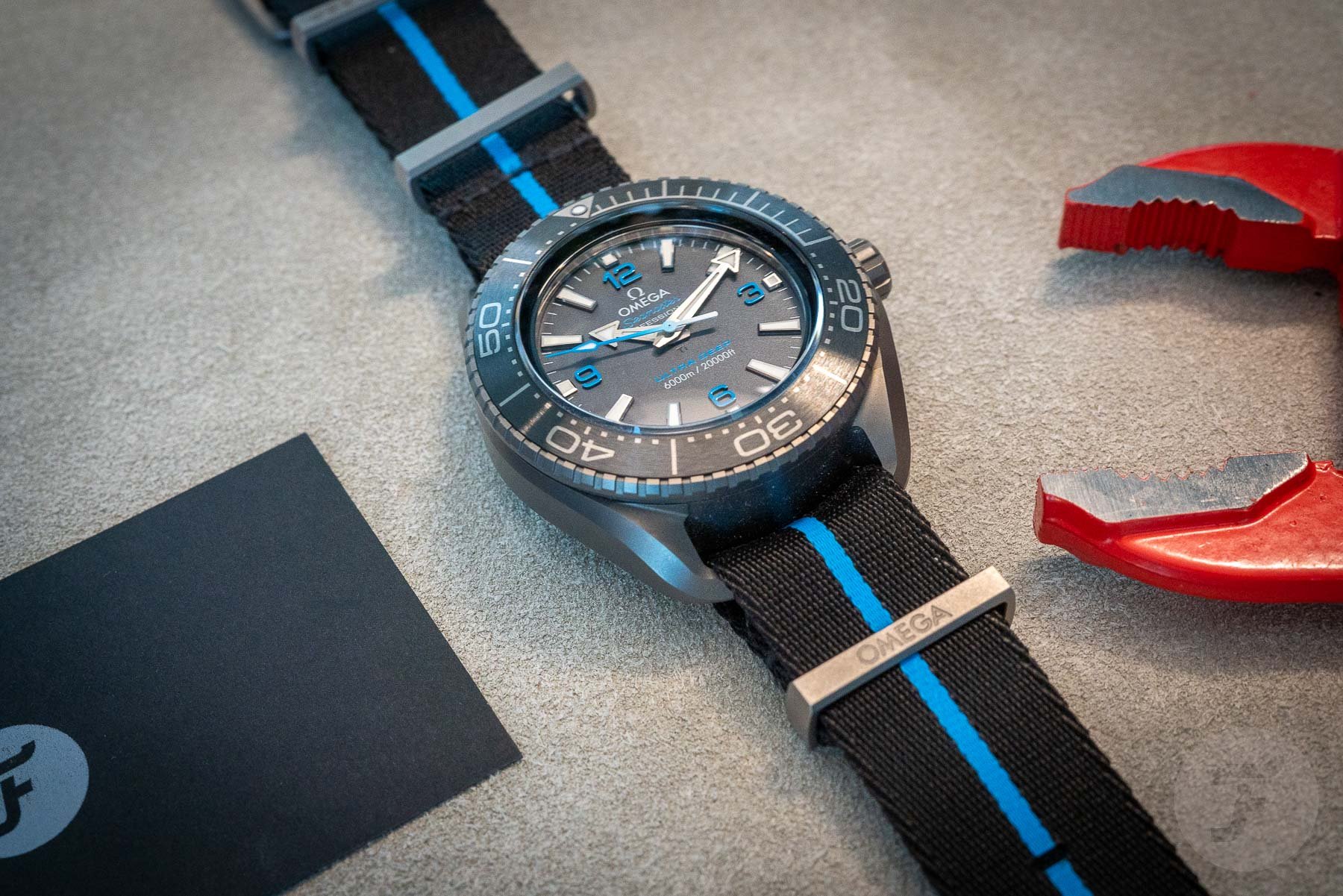Diving Deep Into Water Resistance — How Is It Actually Accomplished?
Whether you take your watch diving or you just want to navigate an unexpected rainshower free of worry, water resistance is a key trait for a watch. Moisture is arguably a watch movement’s biggest nemesis, regardless of whether that movement is mechanical or quartz. Keeping the moisture out is a top priority for watch designers, manufacturers, and watchmakers. The degree to which they succeed is expressed through depth ratings in atmospheres or meters. And we watch geeks love to compare scores. “Watch A has 100 meters of WR, and watch B can survive 500 meters”. But the question arises: what does it take to reach such numbers? What compromises do designers face when they aim for a certain degree of water resistance? I interviewed three experts to find out.
I spoke to the team at Baltic, who recently launched the Aquascaphe Titanium. They made some technical changes to the Aquascaphe platform, upping the water resistance from 200 to 300 meters for the new version. Next, I talked to the folks at Airain. They are currently speccing the upcoming Sous-Marine diver, facing the challenges and decisions discussed here. Lastly, I talked to the experienced Dutch watchmakers at Tempus about the influence of servicing. We also discussed some of the varying constructions from different eras that they come across in their daily practice.
An impenetrable barrier
When I was a kid, I would often challenge myself to “hold” as much water as I could under the shower. I would fold my hands into a bowl or make a little basin by crossing my arms tightly across my chest. The more water I could collect, the bigger the splash would be when I released it for a spectacular drop on the shower floor.
If you have ever done something similar, you know how the smallest of cracks matters. This might give you an intuitive sense of what water resistance entails. It is about forming a barrier that is impossible for liquid to penetrate. A great example of such a barrier is a plastic bottle. Even the cheapest of bottles are completely watertight. And if such a bottle is watertight, should it not be quite easy to make a metal watch watertight?
The one ingredient that is missing from our intuitive understanding of waterproofing is pressure. As we go deeper underwater, the weight of all that water above puts pressure on us. For every 10.06 meters that we go down, we are under one additional atmosphere of pressure. So if you want to maintain an impenetrable barrier, your item of choice has to withstand pressure. If you took your plastic bottle full of air — cap screwed on — deep enough, it would get crushed. As you can see, things get complicated pretty quickly.
Water resistance — Not just a matter of sealing
Like the cap on the bottle, a watch has several openings that need sealing. There is usually a crown, a case back, and a crystal. This means three potential points of entry. To keep them watertight, you need tight tolerances. Our compressible muscles and skin seal the seams between our hands when we form a bowl with them. Similarly, gaskets can be used between watch parts. You will find gaskets between the case and the crystal, case back, and crown.
Back in the day, gaskets were made of lead or shellac. When Omega introduced the first Seamaster in 1948, its major innovation was the use of rubber seals. The flexible rubber allowed for much tighter seals, resulting in better water resistance. Such watches were often labeled as “waterproof”, a term no longer in use in watches today as it implies complete impermeability.
If you take such watches deep enough, eventually the crystal or the case back will deform, breaking the seal. This is the watch equivalent of that bottle crushing. This is caused by the compressible nature of the air inside.
Structural integrity is the name of the game
So adding seals will result in some water resistance. If you really want to go deep, though, we have to look at the structural integrity of the watch. Its individual components should maintain their shape under pressure. When combined, they should preferably keep each other in shape when squeezed together.
A thicker case is one thing, but the case back and crystal are more likely points of failure. Those snap-on case backs from those early Seamasters would eventually warp. The same goes for their thin acrylic crystals. When true dive watches appeared a few years later, you saw thick screw-down case backs. On the top side, you found much, much thicker acrylic crystals. In fact, this is why a modern Rolex Air-King, for instance, is rated at 100m versus the 300m rating of the Submariner. Sure, the Air-King has a Twinlock crown versus the Sub’s Triplock. But even a Twinlock is capable of 300 meters. It is, in fact, the thinner case back that would warp under pressure.
Baltic confirmed that the biggest difference between the Aquascaphe Classic and the Aquascaphe Titanium is the thickness of the materials. The case, case back, and sapphire crystal are all thicker on the new model. While retaining the same tech otherwise, that boosted its water resistance from 200 to 300 meters. For now, the brand sees no potential in even greater depth ratings. It would require even thicker cases, which would not fit Baltic’s aesthetic design language. Alternatively, you could fill the watch case with something less compressible than air. Sinn fills its quartz-powered UX with oil, making the entire watch virtually pressure-proof. Unfortunately, you cannot do that with a mechanical movement.
Screw that crown down for water resistance
The crystal and the case back are designed to remain in place until the next service. The crown, on the other hand, may be operated on a daily basis. It is, therefore, a major point of focus in water-resistant watch design. Again, gaskets are the primary tool in the watch designer’s toolkit here.
Many people recognize a screw-down crown as a crucial part of water-resistant watches. Few know, however, that — under static pressure, at least — an unscrewed crown should perform just as well. The screw-down crown just provides a little extra security, primarily in preventing the crown from being accidentally operated. Different designs allow for different styles and numbers of gaskets, which help to achieve desired levels of water resistance.
A screw-down crown is quite a bit more complicated in construction. Besides the actual screw threads, there is a spring-loaded system in there as well. Without it, screwing it in would cause it to penetrate deeper into the movement. Since the winding and setting positions are fixed, that is not possible. The spring allows for some play, leaving the stem in position while the crown has room to screw in and out. This is why your screw-down crown can feel a little wobbly. It is also why you feel it “jump” out as you unscrew it.
More on crystals
Okay, so that was all pretty basic. With the help of our friends at Tempus, we can go a little deeper. Tempus made a point of mentioning Rolex when it comes to solid construction. “When looking at vintage watches, many have a tension-fitted acrylic crystal. Rolex put its acrylic crystals over a raised edge, fixing them in place with a pressed ring over the top. That is a much sturdier construction.” Such a construction will retain its shape under higher pressure, resulting in more reliable underwater performance.
Jenny took that idea one step further still. Paraphrasing Tempus, “Jenny used a monobloc case and a 5mm-thick acrylic crystal. It too was fitted over a raised edge but secured with a screw-down ring. Combined with triple gaskets, this resulted in a whopping 1000m depth rating. And this was back in 1964.”
Besides the thickness and method of fixation, the crystal’s shape is of influence as well. The crystal needs to disperse the pressure evenly. The shape should direct the pressure evenly along the edge, pressing the crystal into its seal.
More on case backs and water resistance
There is more to consider when designing a case back too. Besides the previously mentioned thickness, the type of fastening is crucial. The best case back is the non-existent case back. That Jenny Caribbean 1000 that Tempus mentioned has no case back. Its monobloc case means it is a front-loader. To get to the movement, you remove the crystal and the dial. This means one less point of entry.
The next best thing is a screw-down case back, the difference being that it is tightened evenly all around. Preferably, it would be sealed with a gasket within its own channel (known as a gland). When screwed in, the gasket will fill that gland completely for a tight seal. Sometimes the gaskets are put in half-open channels, which is not quite as reliable as a closed gland. A display case back requires yet another seal, which is why you are unlikely to find these on serious dive watches.
Lastly, you have your snap-on case backs and those held in place with screws. The snap-on style is simply too easily distorted. The screws introduce an entirely new problem altogether — uneven pressure. The case back will not be pressing down on the gasket with even pressure all around, compromising the water resistance.
How this all affects design choices
Tom van Wijlick, who revived the lost brands Lebois & Co and Airain, is currently developing a dive watch. Who better to ask how all the above influences his decisions? As it turns out, he was right in the middle of a very relevant dilemma when I contacted him.
Tom is bringing back the 1960s Airain Sous-Marine diver. Although visually faithful to the original, it is designed from the ground up as a modern watch. The crystal, as it turns out, is the bottleneck when it comes to water resistance. Tom originally intended to go for an acrylic crystal and a 200m water-resistance rating. This turned out to require a thicker, reinforced construction around the crystal’s perimeter, which raised the bezel. A sapphire crystal could be combined with the original bezel style while maintaining a 200m depth rating. However, the watch is being designed in collaboration with the brand’s fans, who opted for acrylic by a thin margin. The team is currently evaluating which solution best suits the fanbase’s desires.
This perfectly illustrates how you cannot just slap a desired depth rating onto a watch concept. Every design choice has a profound effect. Sometimes compromises have to be made.
Servicing and water resistance
I would be remiss if I skipped over servicing within the confines of this article. Have you ever left a rubber band in a kitchen drawer for a year or two? When you picked it up, you may have noticed it was brittle, sticky, and anything but elastic. Something not too dissimilar happens to your watch’s gaskets.
Tempus shares that the crystal seals usually become brittle after about five or six years. That makes sense, as they are intended to last roughly a recommended service interval. Naturally, you want your watchmaker to use gaskets of the right size and thickness and to install them with the right amount of water-repellent grease.
As a little side note, let me advise you to respond quickly if you ever find your watch heavily fogged up. Above, you see an image of a Rolex movement that the owner left for a couple of days before visiting the watchmaker. Luckily, Tempus managed to get it back in shape, but rest assured that it could have been a lot cheaper if only it was taken care of sooner.
Testing and specifying water resistance
Unfortunately, not all water resistance ratings are created equal. For most watches, a sample-testing method is in place. One in every X number of watches is put through a static pressure test. If such a watch says “20 ATM” on the dial, it means something different entirely from an ISO-certified dive watch rated to the same 20 ATM.
I will not go into too many details, since Gerard has already done that quite well. But a few things are worth noting. For one, under ISO certification, every single watch gets tested. As such, you know for sure that your watch came out of the factory performing to spec. Furthermore, it is tested to 25% over spec under a number of tough circumstances that resemble real-life abuse.
In short, then, two randomly selected 20 ATM-rated watches are likely to fail at completely different points. Except for ISO-certified watches, there is no fixed set of demands to go with different depth ratings. As recommended in my article on overrated specs, take it all with a grain of salt.
Closing thoughts
I hope the above paints a picture of the complexities involved in water-proofing a wristwatch. It is good to be aware of the compromises required to reach certain depth ratings. Oftentimes, two desired outcomes are at odds with each other, as we see in the Airain example.
Omega recently beat the game with the Ultra Deep Professional. Rated at 15,000 meters, there is simply no ocean deep enough. The Mariana Trench, the deepest bit of wet you will find on Earth, is “only” 11,000 meters deep. With four kilometers of redundancy, you can consider the game of water-resistant wristwatches won and done. I have seen tin cans with a subtler fit on the wrist, though, so as always, bragging rights come at a cost.
Hopefully, this article has taught you something new about water resistance. Is it a spec that is important to you? Do let us know in the comments below.

